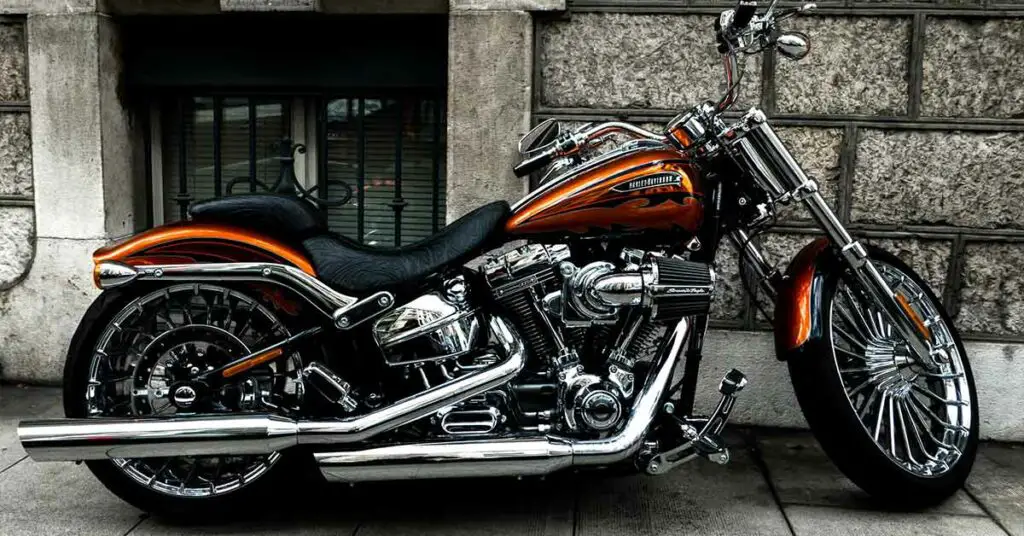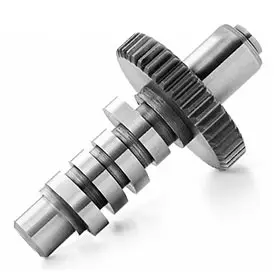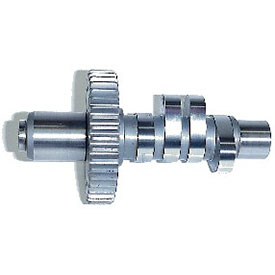
Table of Contents
The Harley-Davidson Evolution Engine
The evolution engine is one of the most iconic engines created by Harley. It is an air-cooled, 45-degree, V-twin engine with a displacement of 1,340 cubic centimeters (approximately 80 cubic inches). The evolution engine was manufactured from 1984 through 1999. It took nearly 7 years to develop and saved Harley from demise.
The little profit Harley made in the 70s drove the company to design a progressive engine that could stand a chance against the competition. Luckily, the evolution engine proved to be a success. The evolution engine was designed to guarantee durability and reliability.
The engine is entirely made of aluminum, which ensures the engine’s incredible durability. Harley’s previous engine design was made of both aluminum and iron. This caused excessive friction between the parts, which led to early deterioration. Manufacturing the engine parts from the same material easily resolved this issue.
In addition, aluminum is a superior thermal conductor that better supports the air-cooling process. The use of aluminum also caused the Harley bikes to be more lightweight. This and many other important features established the evolution engine’s reputation as one of the most reliable engines.
The Purpose of Camshafts
A camshaft is a rod with lobes attached to it. The camshaft is installed at the top end of the engine. As the rod rotates, the lobes open and close the intake and exhaust valves. Camshafts alter the timing in which the valves open and close, which can increase horsepower or torque.
This is the primary use of performance camshafts, which is what people most commonly install to upgrade their bikes. Moreover, the camshaft is connected via a chain to the turning of the crankshaft. This controls the movement of the pistons inside the cylinder part of the engine.
The shape of the lobes is what determines how far the valves open, otherwise known as lift. It also determines how long the valves stay open, which is known as duration. Some engines are designed to use double overhead camshafts (DOHC) and others use single overhead camshafts (SOHC). DOHC increases top-end power and provides better efficiency.
However, it adds extra weight to the engine and is more costly than a SOHC. More importantly, you will want to look at what kind of camshaft is right for you. For instance, you can choose between a regular or a high lift cam. A high lift cam requires stronger valve springs and large valves. Its main objective is to increase horsepower, while other cams might be more suited for improving torque.
You can also choose between a chain or gear-driven cam. In general, gear-driven cams are more reliable and expensive. As clearly seen, there are many types of cams, which is why it is crucial to understand the purpose of each.
How to Choose the Perfect Cam
Many people make the mistake of choosing the biggest cam they see. However, this can cause problems with your bike. The cam with the largest measurements is not always the best option. Below are the two most important factors to consider when choosing a cam:
Engine
The cam you select needs to be compatible with your engine. This means that the camshaft must be a match to all the engine components, such as valve size and compression ratio. The specifications of the camshaft need to be closely looked at to make sure they are harmonious with the components of your engine.
The main three specifications of a camshaft are lift, duration, and intake closing time. For instance, the lift measurement of the camshaft you choose should not exceed the maximum lift of your springs. Camshafts with a long duration and late intake closing time are best suited for larger engines with higher compression ratios.
Conversely, low compression engines are more compatible with camshafts that have a shorter duration and early intake closing time.
Riding Style
Riding style refers to how you primarily use your bike. You need to consider whether your bike will mainly be used for daily street riding, drag or track racing, etc. You also need to consider the RPM range you most frequently ride in.
Do you spend most of your time in low-range, mid-range, or high-range RPM? You do not want to choose a high lift or radical cam when you spend most of your time in the mid-range. High lift cams are better suited for high-range RPM, such as in track racing.
Street bikes do best with mild cams since most time is spent in the mid-range.
The Best Cams for the 1340 Evolution Engine
So, what camshafts should you buy if you own a Harley-Davidson bike with a 1340 evolution engine? Below is a list of the best cams that are compatible with the 1340 Evo engine:
1. Andrews EV27 Cam
- Intake Opening Time: 20 degrees
- Intake Closing Time: 36 degrees
- Intake Valve Duration: 236 degrees
- Valve Lift: .495
- Exhaust Opening Time: 44 degrees
- Exhaust Closing Time: 16 degrees
- Exhaust Valve Duration: 240 degrees
- Valve Lift: .495
Price: $152
The Andrew EV27 cam is a great choice for touring bikes. The EV27 cam is designed for people looking to get more torque out of their bikes. It is a bolt-in cam with fast valve opening and closing times. This produces a broad torque range throughout the RPM range. The cam can pull from 1,500 to 6,000 RPM. It is a mild cam, which means it will not cause a lot of stress on the other parts of your engine. The EV27 also comes at a reasonable price of about $150, which makes it one of the more economical cams you can buy. Overall, the EV27 cam is a solid choice that will not let you down.
2. Andrews EV23 Cam
- Intake Opening Time: 10 degrees
- Intake Closing Time: 30 degrees
- Intake Valve Duration (.053): 220 degrees
- Intake Valve Duration (.020): 255 degrees
- Valve Lift: .498
- Exhaust Opening Time: 40 degrees
- Exhaust Closing Time: 8 degrees
- Exhaust Valve Duration (.053): 228 degrees
- Exhaust Valve Duration (.020): 264 degrees
- Valve Lift: .98
Price: $151
The Andrews EV23 is also a bolt-in cam like the EV27. It is ideal for heavy touring bikes and high-geared bikes. It has a pulling power of around 1,500 to 6,000 RPM and works well in high altitudes. The EV23 is great for riders who want both strong power and torque. It provides a significant amount of power in the mid-range. The EV23 is also one of the more inexpensive, high-quality cams with an easy installation. The EV23 is an all-around excellent cam.
3. S&S Cycle 600 Cam
- Intake Opening Time: 20 degrees
- Intake Closing Time: 55 degrees
- Intake Valve Duration: 255 degrees
- Valve Lift: .600
- Exhaust Opening Time: 60 degrees
- Exhaust Closing Time: 20 degrees
- Exhaust Valve Duration: 260 degrees
- Valve Lift: .600
Price: $205
The S&S Cycle 600 cam is suited for large engines with a compression ratio of 9.5:1 to 10.5:1. The RPM range is from 3,500 to 6,000. The cam provides strong power throughout the RPM range, especially in the mid-range. However, the powerful nature of the cam requires high lift springs to be in place. Though the cam is slightly more expensive, it is fairly priced for its incredible power. The S&S Cycle 600 is a cam that does not disappoint.
4. Feuling 518 Cam
- Intake Opening Time: 4 degrees
- Intake Closing Time: 42 degrees
- Intake Valve Duration: 226 degrees
- Valve Lift: .518
- Exhaust Opening Time: 51 degrees
- Exhaust Closing Time: 5 degrees
- Exhaust Valve Duration: 239 degrees
- Valve Lift: .528
Price: $239
The Feuling 518 is one of the only direct bolt-in cams Feuling makes for the Evo engine. It has an RPM range of 1,650 to 5,500. The cam responds well with performance exhaust and air cleaner, as well as with increased compression and cylinder work. The Feuling 518 produces about 70 to 75 in horsepower like most other cams made for the Evo engine. It costs slightly more than the Andrew and S&S Cycle cams, but it is still equal in quality and value.
5. Andrews EV46 Cam
- Intake Opening Time: 25 degrees
- Intake Closing Time: 41 degrees
- Intake Valve Duration: 246 degrees
- Valve Lift: .495
- Exhaust Opening Time: 49 degrees
- Exhaust Closing Time: 17 degrees
- Exhaust Valve Duration: 246 degrees
- Valve Lift: .495
Price: $147
The Andrew EV46 is yet another quality cam designed for the Evo engine. It has high static compression pressure and a 4,000+ RPM. The EV46 is better suited for lighter bikes than the EV27 and the EV23. The cam also has fast open and close ramps. The high static compression pressure means the EV46 has excellent low-range torque. A cam similar to the EV46 is the EV3, though the EV3 has less low-range torque. In essence, the EV46 is a perfect choice if you have a lighter bike (Softail, Dyna, etc.) and are on a budget.
6. Screamin Eagle SE-4 Cam
- Intake Opening Time: 20 degrees
- Intake Closing Time: 36 degrees
- Intake Valve Duration: 236 degrees
- Valve Lift: .505
- Exhaust Opening Time: 46 degrees
- Exhaust Closing Time: 14 degrees
- Exhaust Valve Duration: 240 degrees
- Valve Lift: .505
Price: $170

The Screamin Eagle SE-4 cam is one of the original Harley-Davidson parts. The RPM range of the SE-4 cam is from 3,000 to 5,500. This range helps with low to mid-range torque. The SE-4 cam is best suited for heavy touring bikes. If you own a lighter bike and want an original Harley-Davidson cam, then the SE-11 is a good choice for you. The SE-11 is very similar to the SE-4, but it has a larger RPM range. Depending on where you buy the SE-4, the price can range from $170 to $230. Overall, the SE-4 cam is a safe and reliable choice.
7. Wood W6 Cam
- Intake Opening Time: 20 degrees
- Intake Closing Time: 40 degrees
- Intake Valve Duration: 240 degrees
- Valve Lift: .510
- Exhaust Opening Time: 42 degrees
- Exhaust Closing Time: 18 degrees
- Exhaust Valve Duration: 240 degrees
- Valve Lift: .510
Price: $235

The Wood W6 cam is a great choice whether you own a heavy or lightweight bike. The W6 cam is strong from idle to 5,500 RPM. It offers both strong horsepower and torque. Horsepower is strong in the mid and high top range, and torque is most effective in the low to mid-range. The Wood W6 cam is truly one of the most versatile cams out in the market. However, it can be slightly more expensive than other cams. Depending on where you buy it, the W6 cam can range anywhere from $200 to $400.
8. S&S Cycle 640 Cam
- Intake Opening Time: 25 degrees
- Intake Closing Time: 60 degrees
- Intake Valve Duration: 265 degrees
- Valve Lift: .640
- Exhaust Opening Time: 65 degrees
- Exhaust Closing Time: 25 degrees
- Exhaust Valve Duration: 270 degrees
- Valve Lift: .640
Price: $209
The S&S Cycle 640 cam is for engines with large displacements. It suits engines with compression ratios of 10.5:1 and 11.5:1. It also works well with smaller motors that have compression ratios of 11:1 and 12:1. The cam has an RPM range of 3,000 to 6,000. High lift valve springs are required to be in place before installing the 640 cam. This cam is great if you are looking to add more horsepower to your Harley. The S&S 640 has excellent linear power delivery, which means power is equally distributed throughout the RPM range. The S&S 640 is also an affordable option for the most part.
Conclusion
There are a variety of exceptional cam options for your Harley 1340 Evo. All the cams discussed in this article are compatible with the Harley models from 1984-1999. The one you decide to buy is dependent on what your particular needs are.
Consider whether you own a heavy or lightweight bike when making your decision. Though most cams are suitable for bikes of any size, some are more geared towards heavier or lighter bikes. In addition, keep in mind what you are trying to achieve by installing a camshaft. Are you looking for more horsepower or torque? Or do you want an equal amount of both? All these factors will help you determine the ideal camshaft for your bike.










